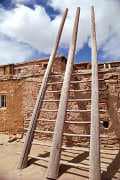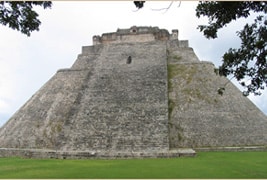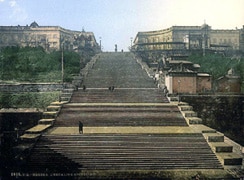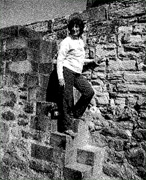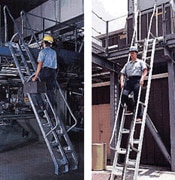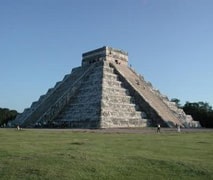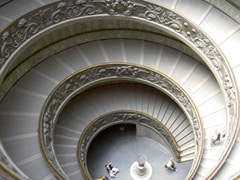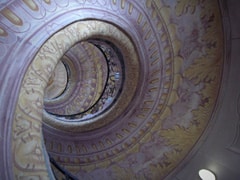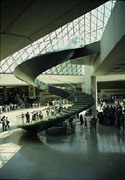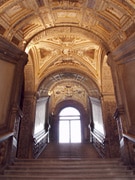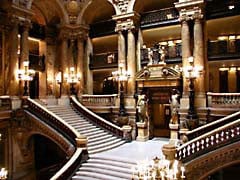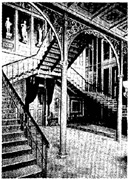Source: Templer, John. 1992. The Staircase: History and Theories. Cambridge, Massachusetts: The MIT Press.
“The Artist who does not conceive of a staircase as something fantastic is not an artist.”
– Gio Ponti
Stairs, ladders and ramps entered the thesaurus of building components in prehistoric times. Yet even the earliest known and simplest demonstrations are still constructed today. As new variations have developed, these have been absorbed into the vocabulary, usually without displacing other models.
The fundamental prosthetic nature of stairs encourages this conceptual longevity, as well as constant rebirth and replication. This functional destiny is so circumscribed by the boundaries imposed by human physical dimensions and manner of walking that the quintessential geometry of the stair has changed more in response to shifting aesthetic, architectonic, and cultural goals than from theoretical or empirical reinforcement. (Preface)
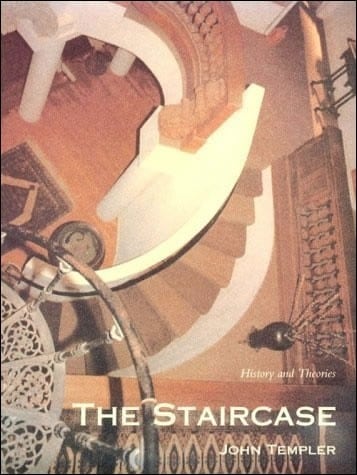
“Architects, all idiots; they always forget to put in the stairs.”
– Gustave Flaubert
The Staircase
For fun we have compiled photographs of different stair types. If you would like a copy of The Staircase by John Templer, please give us a call.
The Straight Stair
A straight flight stair has a single flight or several flights linked by landings.
The stair does not change direction. Straight flight stairs range from climbing poles to ladders and companionways and from garret stairs to Michelangelo’s masterpiece for the Laurentian Library. A straight flight ramp is in this sense a stair without risers (14).
Ladder at Sky City, New Mexico Pyramid of the Magician, Uxmal, Mexico The 142-metre-long Potemkin Stairs in Odessa Double-riser stair, Lindisfarne, England, by Sir Edwin Lutyens (22) Lepeyre industrial double-riser stair Castillo, Chichén Itzá Mexico
The Helical Stair
“This winding, gyring, spiring treadmill of a stair is my ancestral stair.”
– W.B. Yeats
The helical stair is also called the spiral stair, winding stair, circular stair, elliptical stair, oval stair, geometric stair, vis, vice, vis de Saint Gilles, St. Gilles screw, belfry stair, turret stair, caracole, turnpike, cochlea, cockle, corkscrew, and ascensorium. Helical is possibly the least poetic but also the most accurate generic title (53).
Vatican Museum exit stairs, Rome, Italy Spiral staircase, Melk Abbey, Austria I.M. Pei’s helical for the Louvre museum
“All rising to great place is by a winding stair.”
– Francis Bacon
Composite Stairs
Helical or straight flights with landings as couplings are the elements from which composite stairs are formed. A dogleg stair consists of two straight flights and a landing; an imperial stair has two parallel straight flights separated from a third by a landing (87).
Scala d’Oro, Doge’s Palace, Venice Paris Opéra Palace of Prince Albrecht, Berlin, by Karl Friedrich Schninkel, reprinted from Mielke (1966), 238
The Twentieth Century, Modernism, and On
The development of the elevator and escalator in the nineteenth century had a profound effect on architecture. They made the skyscraper practical; or, perhaps more correctly, the maturation of structural science, advancements in steel and reinforced concrete, and economic pressure in big cities mandated the invention of mechanical vertical movement systems to exploit the construction possibilities of these materials. The escalator and the elevator paralleled the invention of quite new building types – the high rise and the mass movement building. They added two new movement systems with functions that are quite different from those of any stair, each has its own functional and economic zone of efficiency (164).

